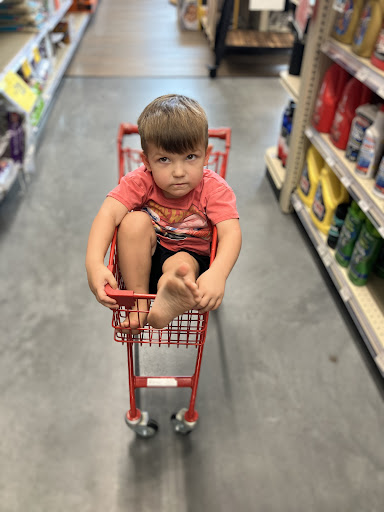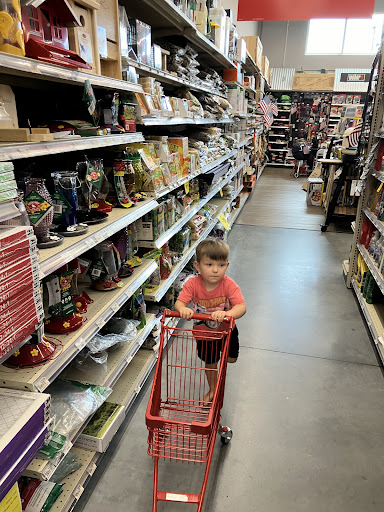Your Quick Guide to Copper Pipe Repair
A copper pipe repair coupling is a crucial plumbing fitting designed to fix leaks or join sections of copper piping. These components provide quick solutions for everything from a pinhole leak to a burst pipe. The main types include Soldered (Sweat) Couplings (a permanent, traditional method), Compression Couplings (a mechanical, solder-free connection), and Push-to-Connect Fittings (known for speed and ease).
Water leaks require immediate attention, but many common copper pipe repairs are well within the reach of a determined DIYer. This guide aims to empower you with the knowledge to tackle these common plumbing problems.
The helpful team at Lowcountry Ace is well-versed in all aspects of copper pipe repair coupling, ready to guide you with expert advice and quality supplies.
Copper pipe repair coupling terminology:
Understanding Leaks and Repair Options
Knowing why copper pipes leak helps you choose the right fix and prevent future issues. Choosing the right copper pipe repair coupling is key to a successful project.
What Causes Copper Pipe Leaks?
Even durable copper pipes can leak over time for several reasons:
- Corrosion: Over many years, minerals in water can wear away copper, creating thin spots and tiny pinhole leaks. Multiple pinholes may indicate an aging plumbing system.
- Freezing Temperatures: When water freezes, it expands with incredible force. In uninsulated pipes, this can cause a pipe to burst, resulting in a major leak.
- Accidental Puncture: Hitting a pipe during home renovations can cause a sudden, noticeable leak.
- Poor Installation: Improperly soldered or tightened joints can eventually fail and begin to drip.
- Abrasion: Over time, pipes rubbing against beams or other pipes can wear the copper thin, leading to a leak.
A single pinhole leak may be a simple DIY fix, but multiple leaks often suggest a larger problem that may require a professional.
Permanent vs. Temporary Fixes
When a leak appears, temporary solutions can stop the water flow until a permanent repair can be made. These are not long-term fixes.
- Temporary Fixes: Repair Clamps wrap around the pipe with a rubber gasket to seal a leak. Epoxy Putty or Tape can be molded over small holes. These are useful in an emergency but are generally not code-approved for permanent use, especially on drinking water lines.
- Permanent, Code-Approved Methods: These are designed to last for years.
- Soldering (Sweat) Couplings: The classic, durable method involving cutting the damaged section and soldering in a new piece with a coupling.
- Compression Couplings: A great solder-free option that uses nuts to compress a ring (ferrule) onto the pipe, creating a watertight seal. They are permanent and DIY-friendly.
- Push-to-Connect Fittings: A fast and easy modern solution. You simply push the fitting onto the pipe to create a permanent, code-approved seal.
For any pipe carrying drinking water, always aim for a permanent, code-approved solution.
An Introduction to the Copper Pipe Repair Coupling
A copper pipe repair coupling is a short fitting that joins two pipes, creating a leak-free seal. It allows you to cut out a damaged section and connect a new piece into the line.
You’ll find two main types: couplings with stops and slip couplings. A standard coupling has a small internal ‘stop’ to ensure pipes meet perfectly in the middle. A slip coupling (or ‘repair coupling’) has no stop, allowing it to slide completely over one pipe. This is ideal for repairs in tight spaces where you can’t move the pipes, as you can slide the coupling over one pipe, position the new piece, and then slide the coupling back to bridge the gap.
These fittings are built to handle high water pressure, with some rated for over 400 psi, but always check the rating to ensure it’s suitable for your system.
Gearing Up for the Job: Essential Tools and Safety
Preparation is key to a successful repair. Having the right tools makes the job easier and ensures a strong, lasting fix. You’ll find everything you need for a copper pipe repair coupling project at Lowcountry Ace.
You will need a pipe cutter for clean cuts, a deburring tool to smooth rough edges, and emery cloth to clean the pipe surfaces. For soldering, you’ll need a propane torch, solder, and flux. For compression fittings, you’ll need two wrenches. For all methods, safety glasses and gloves are essential. For more on essential gear, see The Best Tools for Home Improvement.
Critical Safety Precautions Before You Begin
Safety is the most important step.
- Shut Off Water: Your first step is to shut off your home’s main water supply to prevent flooding.
- Drain the Pipes: Open the lowest faucet in your house (like an outdoor spigot) to drain the remaining water from the lines. A dry pipe is essential for a good repair, especially for soldering.
- Ensure Good Ventilation: If soldering, work in an open area or use windows and a fan to clear fumes.
- Practice Fire Safety: When soldering, keep a fire extinguisher nearby. Remove flammable materials and use a flame-retardant cloth to protect nearby surfaces from the torch.
- Wear PPE: Always wear safety glasses to protect your eyes from debris and splashes, and gloves to protect your hands from heat and sharp edges. Wearing long sleeves and pants is also a good idea.
Your Guide to Installing a Copper Pipe Repair Coupling
With your tools gathered and safety precautions taken, it’s time to fix the leak. The process varies slightly by the type of copper pipe repair coupling you choose. This is where your DIY Home Improvement skills come in handy.
Measuring and Cutting: The Universal First Steps
These initial steps are critical for any repair method:
- Locate the Leak: Identify the source of the drip. Ensure the main water supply is off and the pipes are drained.
- Remove Damaged Section: Use a pipe cutter to remove the leaky part of the pipe, cutting about an inch on either side of the damage.
- Clean and Deburr: Use emery cloth to scrub the outside of the pipe ends until they are shiny. Use a deburring tool to smooth the inside of the pipe ends to ensure a proper seal and prevent damage to fittings.
Method 1: How to Install a Solder Copper Pipe Repair Coupling
This traditional “sweat fitting” method creates a permanent, strong repair.
- Prepare Pipe and Coupling: Clean the inside of the copper pipe repair coupling with a wire brush. Apply a thin, even layer of flux to the cleaned pipe ends and the inside of the coupling.
- Position the Coupling: Slide the coupling onto the pipe ends. For a slip coupling (no stop), slide it fully onto one pipe, insert your new pipe piece, and then slide the coupling back to center it over the joint.
- Heat the Joint: Use a propane torch to apply heat evenly around the joint. The flux will bubble when it’s hot enough.
- Apply Solder: Touch the solder wire to the joint on the side opposite the flame. The heat will draw the solder into the joint, creating a watertight seal.
- Cool and Inspect: Let the joint cool naturally. A successful repair will have a complete, shiny bead of solder around the joint.
Method 2: Using Compression Couplings for a Solder-Free Fix
A great alternative if you prefer not to use a torch.
- Assemble the Fitting: A compression fitting includes a body, two nuts, and two rings called ferrules. Slide a nut and then a ferrule onto each pipe end.
- Position the Coupling: Insert both pipe ends firmly into the coupling body.
- Tighten the Nuts: Hand-tighten the nuts, then use two wrenches—one to hold the body steady and one to tighten each nut about a quarter to a half-turn more. Do not overtighten. Applying pipe dope to the ferrule can improve the seal.
- Test: Slowly turn the water on and check for leaks. If you see a drip, slightly tighten the nut until it stops.
Method 3: The Push-to-Connect Copper Pipe Repair Coupling
For speed and ease, push-to-connect fittings are an excellent choice, requiring no soldering or glue.
- Prepare the Pipe: Ensure the pipe ends are cut cleanly and are thoroughly deburred. A smooth surface is critical for the internal O-ring seal.
- Mark Insertion Depth: Use a gauge tool or measuring tape to mark the correct insertion depth on your pipe ends.
- Install the Coupling: Push the fitting firmly onto the pipe until it reaches your depth mark. For a slip coupling, push it fully onto one pipe, then use a disconnect tool to slide it back over the other pipe to bridge the gap.
- Test: Slowly turn on the water and check for leaks. The seal is secure almost instantly.
Choosing Your Repair Method: A Comparison
Deciding on the best copper pipe repair coupling depends on your comfort with tools, time, and budget.
Here’s a quick comparison:
| Feature | Soldering (Sweat) Coupling | Compression Coupling | Push-to-Connect Coupling |
|---|---|---|---|
| Cost | Low (fittings, solder, flux) | Moderate (fittings) | Higher (fittings) |
| Skill Level | Moderate (requires practice) | Easy-Moderate (wrench use) | Easy (push on) |
| Durability | Excellent (permanent, strong) | Excellent (permanent, strong) | Excellent (permanent, robust) |
| Tools Required | Torch, solder, flux, cleaner, cutter | Wrenches, pipe cutter, cleaner | Pipe cutter, deburring tool |
| Heat Involved | Yes | No | No |
| Pipe Condition | Dry | Dry/Slightly damp | Dry/Slightly damp |
| Flexibility | Limited | Limited | Allows for some adjustment |
Pros and Cons of Each Method
- Soldering (Sweat) Couplings: This method creates a strong, durable, and reliable joint. The materials are affordable, making it a budget-friendly choice. However, it requires skill, specific tools like a torch, involves a fire risk, and the pipe must be completely dry.
- Compression Couplings: A great permanent solution that requires no heat, making it safer and more user-friendly for DIYers. They are code-approved and can sometimes be installed on slightly damp pipes. On the downside, they can be bulkier than soldered joints and can be damaged by overtightening.
- Push-to-Connect Couplings: The fastest and easiest method, requiring no soldering, glue, or special tools. They are code-approved and versatile. The main drawbacks are the higher cost per fitting and the absolute need for a perfectly clean, deburred pipe end for the O-ring to seal correctly.
When Is It Time to Call a Professional?
Sometimes, calling a professional plumber is the smartest choice. The team at Lowcountry Ace can recommend a trusted local professional if you encounter these situations:
- Widespread Pinhole Leaks: Multiple leaks may signal systemic corrosion, requiring a professional solution like a repipe.
- Leaks Near Electrical Panels: This is a major safety hazard. Shut off the power and water immediately and call a professional.
- Low Water Pressure: This could indicate a larger, more complex problem within your plumbing system.
- If You’re Not Confident: If you feel unsure or overwhelmed, a professional can guarantee a proper repair and provide peace of mind.
- Major Pipe Bursts or Hidden Leaks: A significant burst or a leak behind a wall requires expert attention and specialized tools to diagnose and repair without causing more damage.
Frequently Asked Questions about Copper Pipe Repair
Here are answers to some common questions about fixing copper pipes.
How long does a copper pipe repair last?
A permanent copper pipe repair coupling—whether soldered, compression, or push-to-connect—is designed to last for the life of your pipe system. These are durable, code-approved fixes. Temporary solutions like clamps or epoxies are only for short-term use and should be replaced with a permanent repair as soon as possible.
Can I use a repair coupling on a wet pipe?
For soldering, the pipe must be completely dry, as solder will not adhere to a wet surface. Compression and push-to-connect fittings can often be installed on a slightly damp pipe, but it is always best to drain the system as much as possible. A dry pipe ensures the most reliable seal and prevents damage to the fitting’s internal components.
What’s the difference between a regular coupling and a slip coupling?
A regular coupling has an internal “stop” in the middle that ensures pipes are inserted to the correct depth for proper alignment. A slip coupling (also called a “repair coupling”) has no stop. This allows it to slide completely over one pipe end, making it ideal for repairs in tight spaces where you can’t move the pipes. You can position the new pipe piece and then slide the coupling back to bridge the gap.
Your Next Steps for a Leak-Free Home
Congratulations! You’ve learned about copper pipe repair coupling and are now equipped to handle common leaks. Whether you chose soldering, compression fittings, or push-to-connect technology, you’ve gained a valuable DIY skill.
Your goal should always be a permanent, code-approved repair. While emergency clamps and epoxies are useful in a pinch, they are not a long-term solution. After your repair, turn the water back on slowly and check your work carefully for any drips.
The helpful team at Lowcountry Ace has been with you on this journey, from finding the leak to this satisfying conclusion. We’re proud to serve the James Island, Folly Beach, and greater Charleston areas with everything you need to keep your home running smoothly.
Whether your next project calls for pipe cutters, solder, or push-to-connect fittings, we have you covered. Find all the home improvement supplies you need for your next project at your local Lowcountry Ace. Now, enjoy your leak-free home!
Lowcountry Ace Hardware: Your one-stop shop for home improvement. We offer quality products from trusted brands and expert advice from our experienced staff. Located on James Island, visit us for tools, hardware, fishing gear, power tools, building materials, grills & smokers, electrical and plumbing supplies, and more.
















